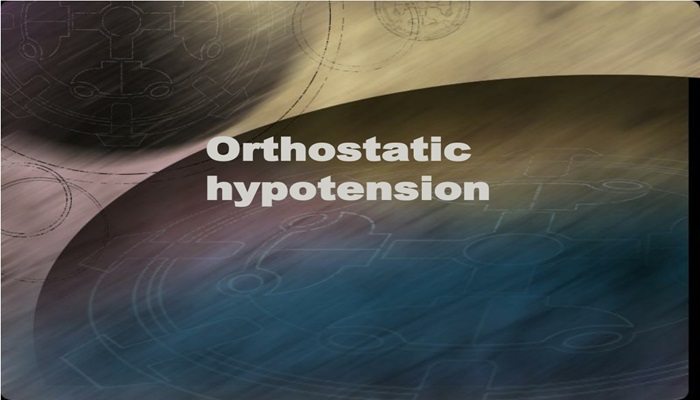Orthostatic hypotension (OH) is a condition where blood pressure drops significantly when a person stands up from sitting or lying down. This drop causes dizziness, lightheadedness, and sometimes fainting. Understanding what causes OH is important to manage and prevent symptoms. Many factors can cause or contribute to orthostatic hypotension, including dehydration, medications, and nervous system disorders. This article explores whether stress can cause orthostatic hypotension, explaining the physiological links, symptoms, diagnosis, and treatment.
What Is Orthostatic Hypotension?
Orthostatic hypotension occurs when the body fails to maintain blood pressure upon standing. Normally, when you stand, gravity pulls blood toward the legs. The body reacts by narrowing blood vessels and increasing heart rate to keep blood flowing to the brain. In OH, these compensatory mechanisms fail or are delayed.
Definition and Diagnostic Criteria
OH is diagnosed when systolic blood pressure falls by at least 20 mmHg or diastolic pressure falls by 10 mmHg within three minutes of standing. Symptoms can range from mild dizziness to severe fainting.
Common Causes of Orthostatic Hypotension
Common causes include dehydration, blood loss, medication side effects, autonomic nervous system disorders, and certain chronic illnesses such as diabetes and Parkinson’s disease.
Understanding Stress and Its Effects on the Body
Stress is the body’s response to physical, mental, or emotional challenges. It activates the nervous system and releases hormones like adrenaline and cortisol. These changes prepare the body for a “fight or flight” response.
Physiological Response to Stress
When stressed, the sympathetic nervous system triggers increased heart rate and blood pressure. Blood vessels narrow to redirect blood flow to essential organs. This response is usually short-term and helps cope with immediate threats.
Chronic Stress and Cardiovascular Health
Long-term stress can lead to harmful effects on the heart and blood vessels. It may cause hypertension, increased heart rate variability, and damage to blood vessels. Stress also affects hormone balance and the autonomic nervous system.
Can Stress Cause Orthostatic Hypotension?
The relationship between stress and orthostatic hypotension is complex. Stress affects the autonomic nervous system, which controls blood pressure regulation. While acute stress usually raises blood pressure, chronic or severe stress can impair autonomic function, possibly contributing to OH.
Stress-Induced Autonomic Dysfunction
Chronic stress can cause dysregulation of the autonomic nervous system. This dysfunction may reduce the body’s ability to maintain blood pressure when standing, leading to OH symptoms.
Role of Anxiety and Panic Attacks
Anxiety and panic attacks are forms of acute stress that can cause rapid changes in blood pressure and heart rate.
Sometimes, these changes cause lightheadedness that mimics orthostatic hypotension. However, true OH requires measurable drops in blood pressure upon standing.
Psychogenic Orthostatic Hypotension
In rare cases, psychological stress may trigger symptoms resembling OH without clear blood pressure changes. This condition involves complex brain-heart interactions and requires careful diagnosis.
Other Factors That May Link Stress and Orthostatic Hypotension
Dehydration and Poor Nutrition
Stress often leads to poor eating and drinking habits. Dehydration lowers blood volume and can cause or worsen OH symptoms.
Medications Used for Stress and Anxiety
Some medications for anxiety or depression can cause or worsen orthostatic hypotension as a side effect.
Sleep Disturbances
Stress frequently disrupts sleep patterns. Poor sleep affects the nervous system and cardiovascular health, potentially contributing to OH.
Symptoms of Orthostatic Hypotension
Common symptoms include:
- Dizziness or lightheadedness upon standing
- Blurred vision
- Weakness or fatigue
- Fainting or near-fainting
- Confusion or difficulty concentrating
Recognizing these symptoms is essential for early diagnosis and treatment.
Diagnosing Orthostatic Hypotension
Blood Pressure Measurement
Blood pressure is measured while lying down, then after standing for one and three minutes. Significant drops confirm OH diagnosis.
Additional Tests
Tests may include blood tests, ECG, and autonomic function tests to identify underlying causes.
Assessing Stress and Psychological Factors
Doctors may evaluate stress levels and screen for anxiety or depression to understand contributing factors.
Treatment and Management
Addressing Underlying Causes
Treatment focuses on managing the root causes like dehydration, medication side effects, or autonomic disorders.
Lifestyle Modifications
Increasing fluid and salt intake, avoiding sudden position changes, and wearing compression stockings can reduce OH symptoms.
Managing Stress
Stress reduction techniques such as mindfulness, therapy, and exercise may improve autonomic function and reduce OH symptoms.
Medications
In some cases, medications like fludrocortisone or midodrine are prescribed to increase blood pressure.
When to See a Doctor
If symptoms of dizziness, fainting, or confusion occur frequently after standing, seek medical advice. Persistent symptoms require thorough evaluation to prevent injury and manage causes.
Conclusion
Stress can affect the autonomic nervous system, which may contribute to orthostatic hypotension in some cases. While stress alone is not a direct cause of OH, it can worsen symptoms or trigger related conditions. Proper diagnosis and treatment of OH and stress-related factors improve patient outcomes. If you experience symptoms of orthostatic hypotension, consult a healthcare professional for comprehensive evaluation and care.
Related topics:


